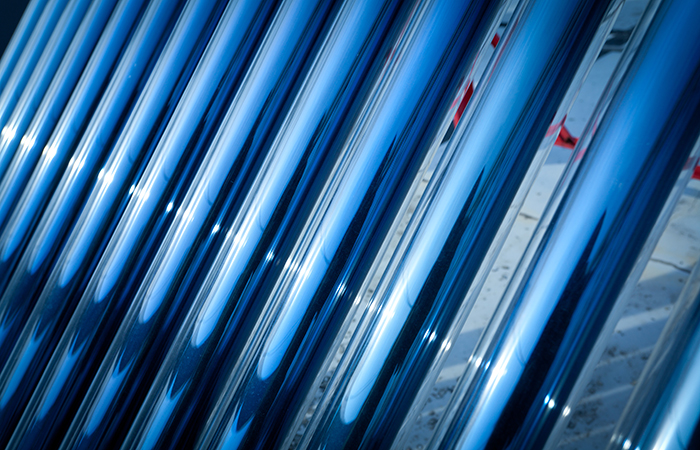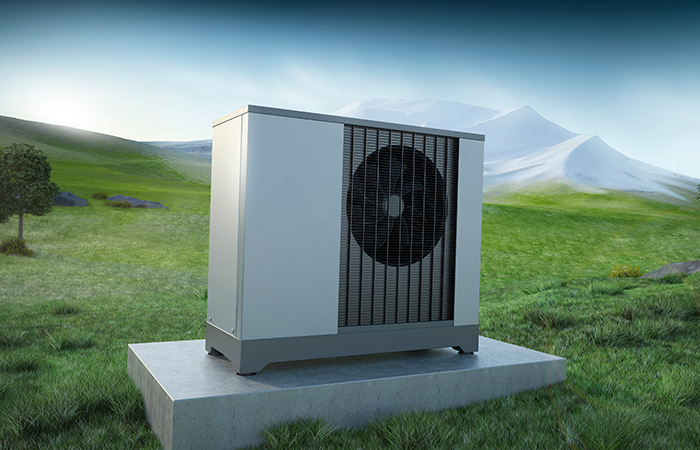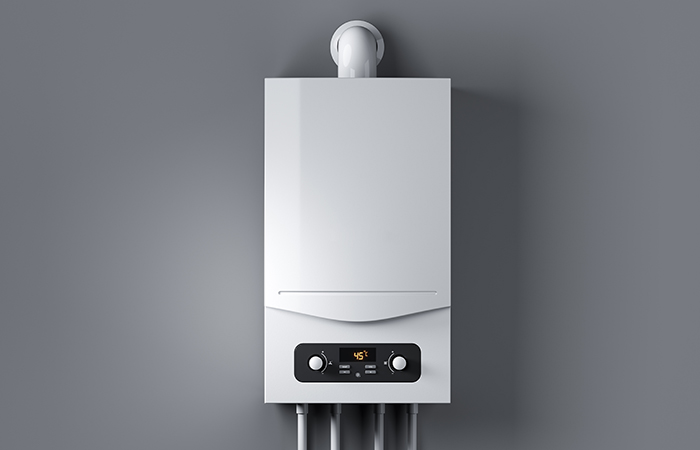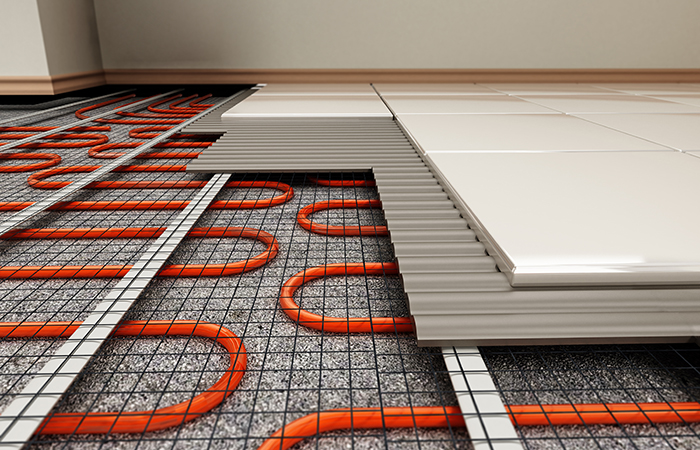Services

Solar Thermal
Solar Thermal panels are most frequently fitted to the roof of a property. The aspect of the roof is at its optimum if south facing however East West aspects are also very effective.
Solar Thermal panels produce warmth and hot water for the home using the heat generated by the sun. The panels are heated by the sun. This heats a liquid that flows around the system through a series of pipes. As the heated liquid passes through a coil inside your water tank it warms the water. This is basically a heat exchange system.
This type of installation is very effective for high consumers of heated water, such as nursing homes, swimming pools, hospitals etc. It can also considerably reduce an average household’s consumption of electricity or gas to heat water as it keeps the water tank constantly warm and eliminates having to heat water from cold. Therefore energy bills will be reduced. As will your carbon footprint.
Design & Install
We at Low Carbon Installations can advise you as to the suitability of this type of installation for your property, taking into account orientation and shading issues from buildings and trees etc. There is the need for some space to accommodate a water tank if there is none already fitted, therefore it may not be suitable in small properties.
An annual inspection and maintenance of this type of system is strongly recommended as leaks, loss of pressure and the degrading of the circulating fluid can drastically affect the installations efficiency and cause serious damage to the solar panels
Solar PV
Solar Photovoltaic panels transform the light of the sun into electricity. It is most common for Solar Photovoltaic (PV) panels to be mounted on roofs. The orientation of the roof is very important, the longer the sun is hitting the panels the more electricity they will produce.
South facing roofs are the most efficient, though East West roofs can produce a considerable amount of power. The more you produce the smaller your energy bills will be. Your household’s carbon foot print will also be greatly reduced.
The power in the form of a direct current is passed through an inverter to give you AC current, it then is fed directly into your home supply and any excess goes into the national grid, for which you will receive a payment from your supplier. Issues that can affect the performance of Solar PV are shading from trees or buildings etc.
Our fully trained and qualified engineers will complete a full inspection of the building where the system is to be installed. The strength and integrity of the roof structure will be assessed and any issues that might impact on the productivity of the installation will be taken into account. The engineer will consider if the roof area is of sufficient square footage to accommodate the correct number of panels to meet the property owner’s needs. The vast improvement in the development of storage batteries for Solar PV systems has meant that this option is becoming more popular with both clients and installers. We have recently installed batteries as a retrofit to existing systems and been asked to quote new systems that now utilise batteries. In the light of rising costs of energy and the diminishing tariff rate it would seem that this option is going to become the common way to proceed to cut energy costs.
Design & Install
Low Carbon Installations have undertaken numerous solar pv installations, for both commercial and domestic clients. From the first survey stage to the final commissioning, we will design and supply an installation that is sleek and tailor-made for the property, using proven quality materials.


Solar PV
Solar Photovoltaic panels transform the light of the sun into electricity. It is most common for Solar Photovoltaic (PV) panels to be mounted on roofs. The orientation of the roof is very important, the longer the sun is hitting the panels the more electricity they will produce.
South facing roofs are the most efficient, though East West roofs can produce a considerable amount of power. The more you produce the smaller your energy bills will be. Your household’s carbon foot print will also be greatly reduced.
The power in the form of a direct current is passed through an inverter to give you AC current, it then is fed directly into your home supply and any excess goes into the national grid, for which you will receive a payment from your supplier. Issues that can affect the performance of Solar PV are shading from trees or buildings etc.
Our fully trained and qualified engineers will complete a full inspection of the building where the system is to be installed. The strength and integrity of the roof structure will be assessed and any issues that might impact on the productivity of the installation will be taken into account. The engineer will consider if the roof area is of sufficient square footage to accommodate the correct number of panels to meet the property owner’s needs. The vast improvement in the development of storage batteries for Solar PV systems has meant that this option is becoming more popular with both clients and installers. We have recently installed batteries as a retrofit to existing systems and been asked to quote new systems that now utilise batteries. In the light of rising costs of energy and the diminishing tariff rate it would seem that this option is going to become the common way to proceed to cut energy costs.
Design & Install
Low Carbon Installations have undertaken numerous solar pv installations, for both commercial and domestic clients. From the first survey stage to the final commissioning, we will design and supply an installation that is sleek and tailor-made for the property, using proven quality materials.

Air Source Heat Pumps
We are now registered with the OFGEM boiler upgrade scheme for Air Source Heat Pumps.
Design & Install
Air and ground source heat pumps extract the natural and renewable heat from the air, or ground.
There is a trade off in that heat pumps require electricity to run, but the amount of heat they produce to provide hot water, heat radiators or underfloor heating far out ways this in terms of reduced energy bills.
Heat pumps deliver heat at a lower temperature and so in winter may need to be constantly turned on. In their favour however, is the fact that radiators will be less likely to become seriously hot to the touch, a worry in every house hold with young or elderly occupants.
Ground source heat pumps are made up of a loop of pipe which is buried vertically or horizontally in the earth. A fluid containing antifreeze circulates through the pipes absorbing heat from the ground and transmits it via a heat exchanger to the heat pump. The length of ground pipes depends on the requirements of your home and the amount of heat you require.
Air Source heat pumps are easier to install than ground source, mainly comprising of a cabinet like structure on the outside of a building, preferably on a sunny wall with plenty of space around them. They can extract heat from the air even at temperatures as low as -15 degrees centigrade.
We at Low Carbon Installations Ltd are committed to providing a service that fullfills the customers expectations. Heat pumps require experienced engineers to assess the practicalities of any installation. Ground Source heat pumps by definition require that pipes are buried under the earth. The needs of the property will define the size of the installation required. The area available to lay the pipes will limit the size of the installation. Our experienced engineers will be able to advise if your property will accommodate the system you wish to install or if an alternative will be of more benefit. Our engineers have been trained to deal with the complicated equipment and have the technical knowledge required for this type of installation

Boilers, Radiators, TRV’s
Not every home is suitable for solar power or heat pumps, but this does not mean that you cannot make savings on your energy bills.
The new and more efficient Combination Boilers (combi boilers) have become one of the most popular installations for those opting or having no option but to heat their homes and provide hot water in this way. Replacing an old gas boiler with a combi boiler can reduce your energy costs enormously.
They are fed direct from the water mains and so do not suffer from low pressure or air locks. They provide hot water and heating on demand and the water is safe to drink as it is mains fed and not held in a tank that can become contaminated. There is no wasted energy heating a tank of water that is not totally required.
Where space is a premium in a property the combi boiler is a compact alternative and has the added bonus of not requiring the space for a water tank.
Due to being less complicated than previous boilers they are less expensive to purchase and to install. They are also easier to service and repair.
Radiators are no longer just a white box like thing hung on a wall. The type, style, colour, and shape of radiators has become as much of a design statement as the furniture in your home. They can be short and wide, tall and narrow, geometric shapes, curved, sculptured, chrome, coloured, mirrored finish. Some can even look like works of art. From the ultra modern to the vintage retro the choices are stunning, and just as importantly highly efficient.
TRV’s or thermostatic radiator valves play an important role in reducing the amount of energy you use.
Fitted to a radiator they give you control over how much you heat any individual room. You may not require your bedrooms to be as warm as a lounge. Or rooms where there is a sick or elderly person may require more or less heat than other areas. TRV’s give you the power to control the heat in your living spaces, customising the areas to your needs and cutting the amount of wasted heat thus reducing energy bills and your carbon footprint.
Design and Installation
In a world where renewable energy is being promoted as the only way to go forward. It is sometimes forgotten that not every home is suitable for this type of installation. In some instances all it takes to reduce energy bills and live in comfort is a new boiler or heating controls.
We at Low Carbon Installations recognise the need to provide an efficient and experienced service to those who heat their home and provide hot water by the more traditional method of a boiler. Therefore we have retained the technology and the expertise we have acquired over the years, and will design and install heating systems that combine efficiency with economy. We will plan the system taking into account the size of each area to be heated, sizing the radiators and the boiler to produce the most efficient use of the energy used. Our engineers will fit a boiler or a full system using quality and highly efficient materials.


Under Floor Heating
Underfloor heating creates a radiator free environment. Furniture can be placed in a room to please the aesthetics, rather than where it will not be blocking heat from a radiator. Another major advantage to under floor heating is that it distributes warmth throughout the room so there are no cold spots and no wasted heat.
There are two types of underfloor heating, known as Wet and Wire. Both systems have their advantages. Wet systems are often used in new builds and extensions where they can be incorporated into the floor structure as it is built. It is also used where floors can be taken up. The majority of wet systems tend to be ground floor fitments though not exclusively.
Electric systems are better adapted for existing floors as it does not require major uplift of the floor heights and is especially good for upper floor levels.
WET SYSTEM
Warm water flows through plastic piping below the top surface flooring, producing a temperature in that surface of around 23 degrees to 32 degrees. This system is fitted to the central heating system or air or ground heat pumps.
WIRE SYSTEM
Cables either fitted on a webbed matting or in a roll are connected to the mains supply and cause less problems when fitting to existing floors. It should be noted however that this system is more costly to run than the wet system and if possible solar panels may be used to offset this cost.
Design & Install
With both types of underfloor heating it is important to seek professional advice. There are many important points to be considered such as boiler size, room size and type of top flooring surface to be used. Stone, slate and tiles are very popular with users of underfloor heating and once up to temperature hold the heat well. Carpet, timber, vinyl and laminates need to be suitable for use with underfloor heating.
Low Carbon Installations will be happy to provide advice, design and install underfloor heating to new and existing projects wherever practicable.

